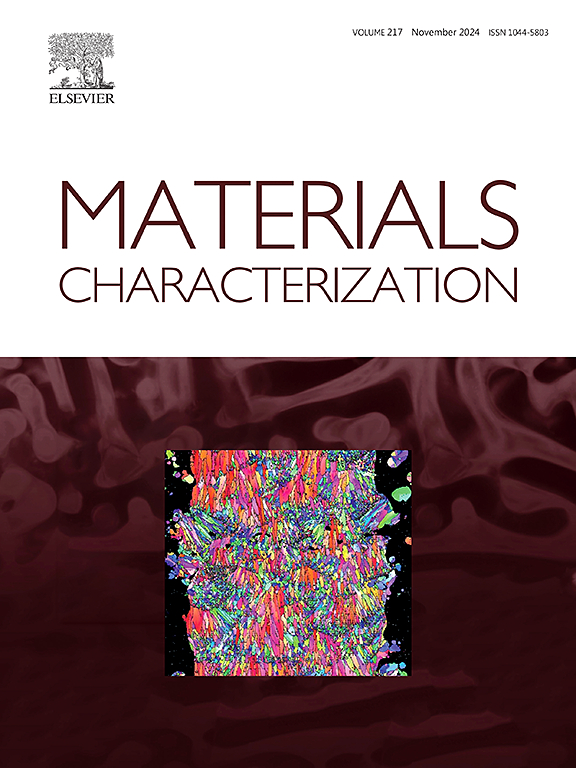Study on the microstructure, properties and strengthening mechanisms of electrophoretic deposited carbon-nanotubes/Cu composites
IF 4.8
2区 材料科学
Q1 MATERIALS SCIENCE, CHARACTERIZATION & TESTING
引用次数: 0
Abstract
The laminated carbon-nanotubes/Cu (CNTs/Cu) composites were fabricated by electrophoretic deposition (EPD), spark plasma sintering (SPS), and hot rolling to achieve a good combination of properties. The microstructure, mechanical properties, and electrical conductivity were investigated, and the strengthening mechanism was discussed. Results indicated that functional groups were introduced onto the surface of CNTs after acid treatment, enabling the formation of an optimal CNT deposition morphology on the Cu matrix at an electrophoretic deposition voltage of 75 V. The sintered CNTs/Cu composite exhibits a laminated structure with coarse grains and randomly distributed textures. Compared to sintered pure Cu, the sintered composite demonstrates a 42.07 % increase in tensile strength and a 17.8 % improvement in elongation. And the electrical conductivity reaches 93.05 % of the International Annealed Copper Standard (IACS). Subsequent hot rolling refined the grains and reoriented the texture to deformation textures. The hot-rolled composites achieve a tensile strength of 355 MPa, an elongation of 12.2 %, and a conductivity of 85.53 % IACS. The strengthening mechanisms of CNTs/Cu composites involve grain refinement, load transfer, and thermal mismatch strengthening, with grain refinement as the primary factor. Grain refinement, crack deflection, and bridging-pullout of CNTs are mainly responsible for the good combination of strength, ductility and electrical conductivity.
求助全文
约1分钟内获得全文
求助全文
来源期刊

Materials Characterization
工程技术-材料科学:表征与测试
CiteScore
7.60
自引率
8.50%
发文量
746
审稿时长
36 days
期刊介绍:
Materials Characterization features original articles and state-of-the-art reviews on theoretical and practical aspects of the structure and behaviour of materials.
The Journal focuses on all characterization techniques, including all forms of microscopy (light, electron, acoustic, etc.,) and analysis (especially microanalysis and surface analytical techniques). Developments in both this wide range of techniques and their application to the quantification of the microstructure of materials are essential facets of the Journal.
The Journal provides the Materials Scientist/Engineer with up-to-date information on many types of materials with an underlying theme of explaining the behavior of materials using novel approaches. Materials covered by the journal include:
Metals & Alloys
Ceramics
Nanomaterials
Biomedical materials
Optical materials
Composites
Natural Materials.
 求助内容:
求助内容: 应助结果提醒方式:
应助结果提醒方式:


